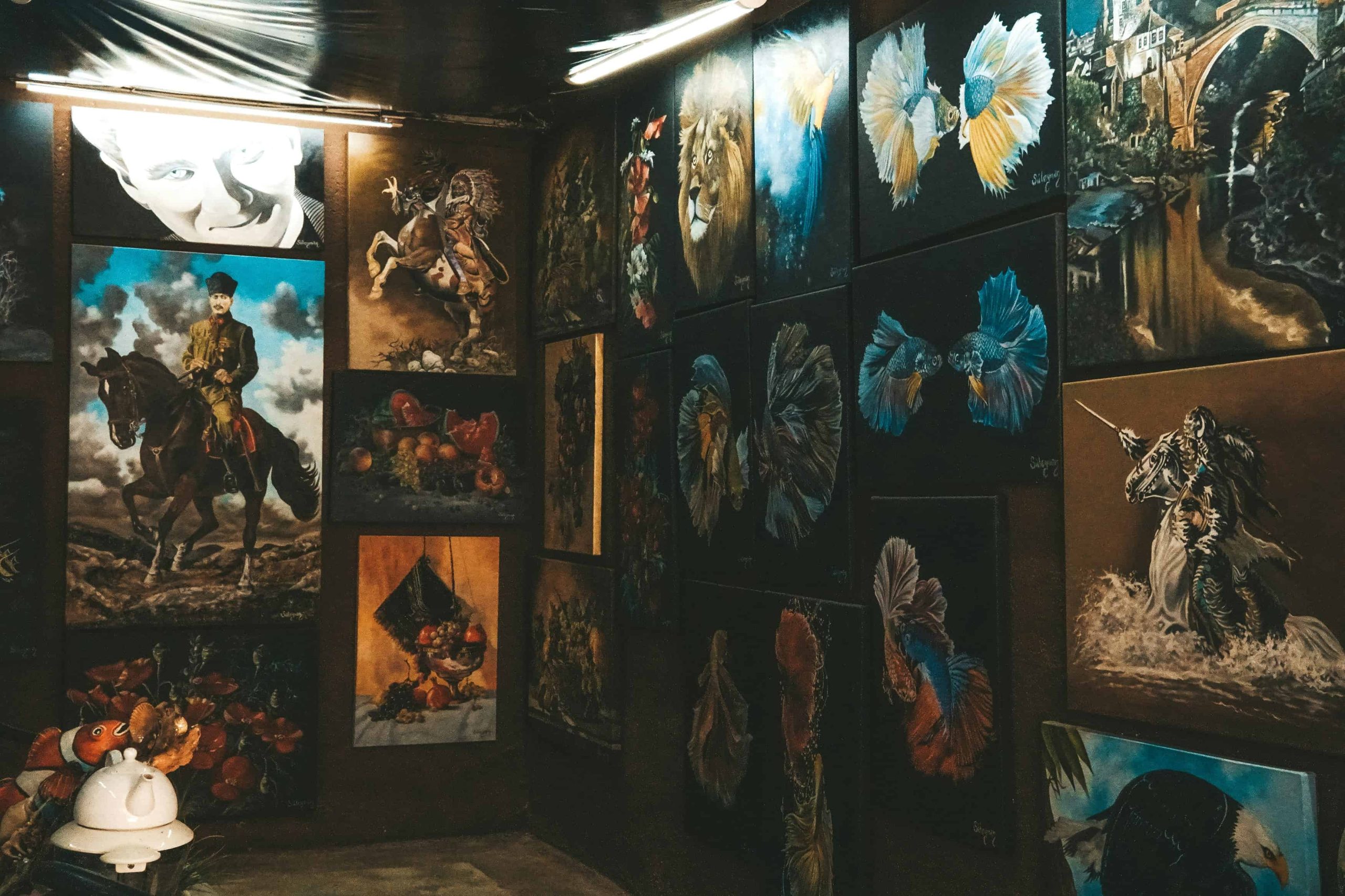
10 Nov Cataloging and Documenting Art Collections: Best Practices
Introduction
Cataloging and documenting an art collection is a vital process that ensures every artwork is properly identified, recorded, and cared for throughout its lifecycle. A systematic approach enhances collection management, supports exhibition planning, and safeguards the collection’s integrity for the future.
Accurate documentation not only strengthens institutional accountability but also contributes to transparency and preservation. This article explores the most effective practices for cataloging art collections, from core documentation principles to the latest technological innovations, providing a structured guide for collectors, curators, and collection managers.
Fundamentals of Art Collections Cataloging
Definition and Purpose of Cataloging
Cataloging involves creating detailed, organized records that describe every item in a collection. Its purpose is to provide reliable information for research, display, and long-term stewardship. A well-maintained catalog ensures consistency and serves as a foundation for decision-making related to conservation, exhibition, and interpretation.
Types of Essential Information to Collect
Comprehensive records should include factual details such as the artwork’s title, artist, creation date, medium, dimensions, provenance, and condition. Additional information—like exhibition history, literature references, and conservation reports—adds valuable context. Together, these data points build a full picture of the artwork’s identity and history.
Cataloging Standards and Methodologies
To maintain consistency, institutions often follow established frameworks such as:
- CDWA (Categories for the Description of Works of Art)
- CCO (Cataloging Cultural Objects)
- VRA Core 4.0 for visual resource description
These standards support interoperability and ensure that records can be shared or integrated with other databases in the future.
Taxonomy and Classification Systems
Classification organizes artworks by attributes such as medium, period, or style. Using recognized vocabularies like the Getty Art & Architecture Thesaurus (AAT) or the Union List of Artist Names (ULAN) promotes uniform terminology and supports more effective data retrieval. Consistent taxonomies help users navigate large collections efficiently.
Core Documentation Components
Basic Identification Information
Every record should include key details:
- Title, artist, date, and medium
- Dimensions and weight, using standardized measurement units
- Edition numbers or accession identifiers, ensuring unique identification within the collection
Provenance and Ownership History
Provenance establishes an artwork’s ownership timeline and authenticity. It should list previous owners, acquisition details, and exhibition history whenever verified information is available. This factual documentation enhances scholarly research and transparency.
Condition Assessment and Reporting
A condition report describes the artwork’s physical state, noting any visible changes or conservation interventions. Photographic documentation supports these reports, allowing comparisons over time. Regular updates help monitor preservation needs and guide future conservation work.
Documentation of Value and Insurance
Rather than offering financial guidance, this documentation simply records factual valuation data as determined by a qualified appraiser or institutional policy. These records help institutions track the insured status and ensure artworks are appropriately protected.
Artist Information and Contextual Background
Including background details about the artist—such as biographical information, artistic influences, and stylistic development—adds interpretive depth. Linking this data to other related works or exhibitions enriches understanding of the artwork’s place within the artist’s career.
Digital Documentation Systems
Collection Management Software
Modern collection management systems (CMS) like MuseumPlus, TMS Collections, and CatalogIt enable efficient digital cataloging. These platforms allow data linking, reporting, image management, and secure multi-user access, streamlining recordkeeping and reducing administrative errors.
Digital Asset Management
Digital asset management (DAM) ensures that all related digital files—images, condition reports, and exhibition documents—are properly stored and linked to catalog records. Following consistent file naming and metadata conventions maintains clarity and accessibility.
Metadata Standards and Schemas
Metadata supports discoverability and structure. Standards such as CDWA, VRA Core, and Dublin Core establish reliable frameworks for recording digital information. Embedding metadata into files ensures that essential information remains connected even when files are moved or shared.
Imaging Standards and Techniques
Professional imaging practices use color calibration, consistent lighting, and multiple view angles. High-resolution TIFF or RAW formats are ideal for archival storage, while JPEGs serve for web use. Embedding technical metadata (EXIF or IPTC) ensures traceability and accuracy.
Data Security and Preservation
To safeguard records, maintain multiple backups in secure locations and routinely verify data integrity. Controlled access, encryption, and version tracking further protect sensitive information. Preservation planning should include regular data migration to prevent technological obsolescence.
Documentation for Exhibition Purposes
Exhibition Documentation
When artworks are prepared for display, exhibition documentation should include environmental requirements, handling notes, and installation guidelines. These records help ensure artworks are displayed safely and under optimal conditions.
Loan Documentation
For artworks lent to other institutions, detailed loan documentation should outline the condition status, handling instructions, duration, and environmental parameters. These factual agreements reduce risk and maintain accountability throughout the loan process.
Checklists and Object Labels
Comprehensive exhibition checklists help track each object’s movement and location. Object labels should provide clear, factual details—artist, title, date, and medium—consistent with catalog records.
Installation and Handling Instructions
Handling instructions specify the proper methods for unpacking, mounting, and displaying artworks. Including diagrams or annotated photos can further support safe and consistent installation.
Transportation and Shipping Documentation
Accurate transport documentation, including packing specifications and environmental conditions, ensures safe transit. All handling records should be stored digitally for future reference and condition comparisons.
Documentation for Permanent Records
Archival Standards and Practices
Archival documentation preserves the institutional memory of a collection. Follow established archival principles, including the use of acid-free materials, structured finding aids, and digital backups for all key documents.
Long-Term Preservation Strategies
Digital and physical records should be monitored over time. Regular data audits, environmental monitoring, and format updates are essential to prevent data loss and maintain access.
Access and Security Protocols
Access controls protect sensitive information while maintaining transparency for research. Define user permissions, maintain edit logs, and ensure that updates are authorized and traceable.
Ethical Considerations
Documentation practices should reflect ethical stewardship, respecting artist rights and cultural heritage standards. Transparency and factual accuracy remain central to maintaining public trust in collection management.
Documentation for Deaccessioning
When artworks are removed from a collection, maintain clear factual records of the process, including the reason for removal and final disposition. This ensures historical continuity and accountability.
Best Practices in Art Collection Documentation
Consistency is key. Establish internal guidelines for formatting, terminology, and data entry to maintain clarity across all records. Schedule regular reviews to verify data accuracy and update entries as needed. Controlled vocabularies and relational linking improve organization and help users navigate the database more effectively.
Backup strategies, staff training, and version control should be part of routine operations, ensuring your catalog remains reliable and sustainable over time.
Emerging Trends and Technologies
Technological advances are redefining art documentation. AI-driven image recognition assists in cataloging large collections by identifying artists or styles, while 3D scanning captures sculptures and installations in remarkable detail. Blockchain technology is being explored to enhance provenance tracking, offering tamper-resistant verification for ownership data.
These innovations are tools—not replacements—for professional cataloging standards. Combining digital efficiency with human expertise ensures accuracy, authenticity, and contextual understanding.
Implementation Strategies
Effective cataloging begins with clear protocols. Establish consistent workflows, assign responsibilities, and document every process. Staff training ensures that cataloging practices align with professional standards, while adequate budgeting supports sustainable growth of documentation systems. Regular audits, peer reviews, and controlled data input maintain long-term quality control.
Conclusion
Cataloging and documenting art collections is a meticulous process that underpins the care, study, and appreciation of cultural heritage. Through systematic recording, digital innovation, and adherence to best practices, institutions and collectors can preserve artworks’ identities and histories for generations to come.
In a rapidly evolving digital environment, maintaining accurate, consistent, and ethical documentation remains the cornerstone of responsible collection management and cultural preservation.
Key Takeaways
- Accurate Documentation is Essential Detailed, consistent records identify, authenticate, and preserve artworks, supporting research, exhibitions, and long-term care.
- Standardized Frameworks Ensure Consistency Using systems like CDWA, CCO, and VRA Core 4.0 promotes data uniformity and easier information sharing.
- Comprehensive Records Build Transparency Including provenance, condition, and artist details provides accountability and a fuller understanding of each piece.
- Digital Tools Improve Efficiency Collection management and digital asset systems streamline cataloging, secure data, and simplify organization.
- Security and Preservation Are Priorities Regular backups, access controls, and preservation planning protect data and maintain collection integrity.
- Exhibition and Loan Documentation Safeguard Artworks Accurate records for handling, installation, and transport ensure artworks remain protected during display or loan.
- Ethical and Archival Practices Maintain Trust Following archival standards and respecting artist rights uphold transparency and institutional credibility.
- Technology Enhances Accuracy AI, 3D imaging, and blockchain improve cataloging precision and provenance tracking while supporting expert oversight.
FAQs
Why is cataloging essential for managing an art collection?
Cataloging provides a structured and factual record of each artwork, including its origin, materials, and condition. This organized documentation supports research, conservation, and exhibition planning, while also protecting the collection’s authenticity and ensuring transparency in long-term management.
How do digital tools improve the art documentation process?
Modern collection management and digital asset systems streamline cataloging by linking data, images, and reports into a unified digital record. They enhance accessibility, prevent data loss, and allow for secure sharing across departments or institutions, improving overall efficiency and accuracy.
What are the best practices for maintaining long-term art documentation?
Regular data audits, standardized terminology, and multiple digital backups are key to sustainable documentation. Institutions should follow archival standards, train staff in consistent data entry, and migrate digital records periodically to prevent obsolescence and preserve accessibility for future use.
If you believe art should be shared and experienced by everyone, this article is for you. It uncovers real-world approaches to inclusive art programs, showing how accessible practices foster participation, understanding, and equality within diverse communities.




